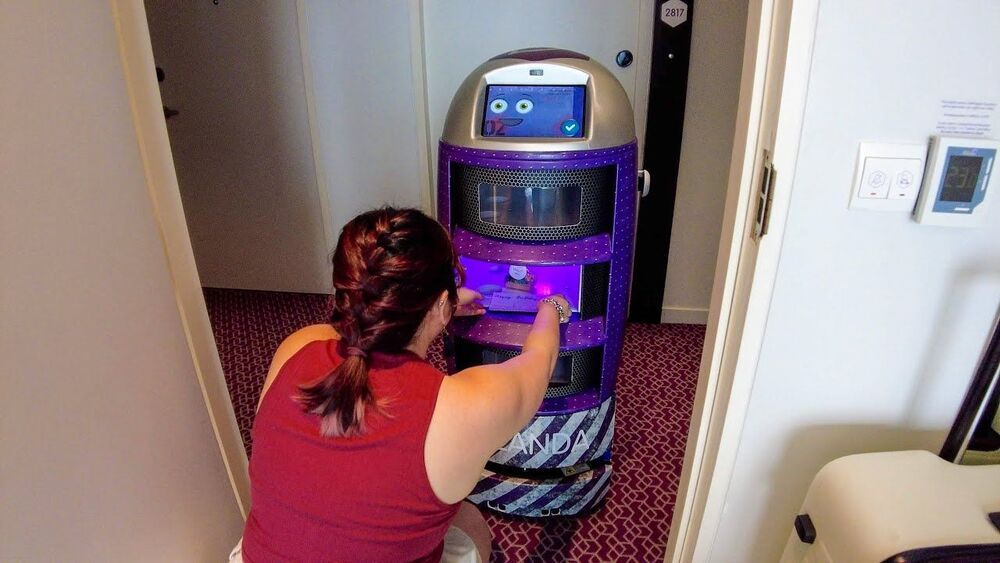Hotel of the future in Singapore.
Staying at a furturistic smart Hotel that has robotsWe take a room tour at their Premium Queen View Cabin and order room service for lunch, dinner and breakfast.

Hotel of the future in Singapore.
Staying at a furturistic smart Hotel that has robotsWe take a room tour at their Premium Queen View Cabin and order room service for lunch, dinner and breakfast.
We speak to AR experts about the future of the Oculus Quest.
Oculus is getting into AR, and it has big repercussions for the future direction of the company and its popular line of VR headsets – especially the eventual Oculus Quest 3.
The Facebook-owned company recently announced its intention to open up its Oculus platform to augmented reality developers, allowing them to use the Oculus Quest 2 headset to host AR games and apps rather than simply VR titles – setting the scene for an explosion of both consumer and business applications on the popular standalone headset.
Continue reading “Oculus Quest 2 is getting AR – but could the Quest 3 take it further?” »
SpaceX is reportedly partnering with Canadian tech startup Geometric Energy Corporation to launch a billboard into orbit around Earth.
Standing hundreds of feet above ground, wind turbines — like tall trees, buildings, and telephone poles — are easy targets for lightning. Just by virtue of their height, they will get struck.
Lightning protection systems exist for conventional wind turbine blades. But protection was needed for blades made from a new type of material—thermoplastic resin composites — and manufactured using an innovative thermal (heat-based) welding process developed by scientists at the National Renewable Energy Laboratory (NREL).
Thermoplastic materials, like plastic bottles, can be more easily recycled than the thermoset materials commonly used to make wind turbine blades today. While thermoset materials need to be heated to cure, thermoplastics cure at room temperature, which reduces both blade manufacturing times and costs.
This image features a spectacular set of rings around a black hole, captured using NASA’s Chandra X-ray Observatory and Neil Gehrels Swift Observatory. The X-ray images of the giant rings reveal information about dust located in our galaxy, using a similar principle to the X-rays performed in doctor’s offices and airports.

The Nemetschek Group’s Open BIM technologies have played a crucial role in the development of Brisbane’s $3.8 billion-dollar Queen’s Wharf project.
Since DNMT3A increases DNA methylation, the researchers used a natural product that donates methyl groups S-adenosylmethionine (SAMe) and to activate the retinoic acid receptor they treated the animals with vitamin A. They found that combined treatment with the methyl donor SAM and retinoic acid reversed PTSD-like behaviors.
Summary: Combining two natural products that modulate the epigenome, researchers believe they have identified a feasible approach to reversing symptoms of PTSD in animal models that could be effective in humans.
Source: Bar Ilan University
Continue reading “Nutritional Supplements Could Help Treat PTSD” »
AIR PLASMA BREATHING via Ground Stations, in lieu of on-board energy supply: Recently, both a German team and a Chinese team have demonstrated jet engines capable of as much thrust as a traditional jet engine, but powered only by electricity. In both cases, the engine uses large amounts of energy to turn ambient atmosphere into plasma, then jetison it via magnetic nozzles. This is to be differentiated from space ion drives, which use tiny amounts of fuel, ejected at high velocities to slowly accellerate a vehicle in free space. By contrast, this new type of engine has huge amounts of fuel available to it in the form of the ambient atmosphere. Such craft could operate in any planetary atmosphere in our solar system, whether on Venus, Earth, Mars, the gas giant or ice giant planets. The only bottleneck holding this type of engine from replacing all current airplanes is the lack of a sufficiently dense on-board energy source. The most obvious enabling technology which will allow this new type of jet, which will require no fuel for its entire lifetime—since its fuel will be the atmosphere—is fusion energy. Fusion is dense enough to fit into a small package, easily mounted on an airplane. Until fusion is obtained there is one other possibility which is currently available, which is beaming energy to a flying vehicle from ground stations. An air-plasma-breathing vehicle, whether a self-standing airplane, or a partial booster phase for a rocket to low-earth-orbit, would have to follow a trajectory within direct line-of-sight of a series of ground beaming stations. A string of such stations would be akin to a land highway, a corridior within which air traffic or space-bound vehicles could travel. Such a corridior would be easy to create. Even over ocean, aircraft carriers or other nuclear vessels could transmit large amounts of energy to such vehicles. For rockets travelling to orbit, such a system would reduce reaction mass, since a portion of its fuel would not be carried by the vehicle. File: compilation of papers on beamed energy for flying vehicles:
Beam-powered propulsion, also known as directed energy propulsion, is a class of aircraft or spacecraft propulsion that uses energy beamed to the spacecraft from a remote power plant to provide energy. The beam is typically either a microwave or a laser beam and it is either pulsed or continuous. A continuous beam lends itself to thermal rockets, photonic thrusters and light sails, whereas a pulsed beam lends itself to ablative thrusters and pulse detonation engines.
The rule of thumb that is usually quoted is that it takes a megawatt of power beamed to a vehicle per kg of payload while it is being accelerated to permit it to reach low earth orbit.
Continue reading “Beamed Energy Propulsion / Beamed Laser Energy Propulsion Documents” »
🌊
Why are innovation cycles and business growth linked so closely? We explore waves of creative destruction across history.
